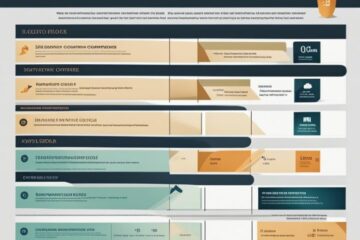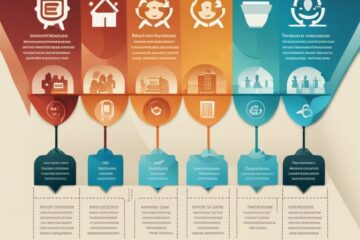Over the years, businesses have come to realize the critical importance of focusing on customer experience. In today’s competitive market, where choices are abundant and consumer expectations are constantly on the rise, providing an exceptional customer experience can make or break a business. It is not just about selling a product or service anymore; it is about creating a lasting impression that leads to customer loyalty and advocacy.
Studies have shown that customers are willing to pay more for a better customer experience, and they are more likely to return to a company that has exceeded their expectations. On the flip side, a negative customer experience can quickly spread through word-of-mouth and social media, damaging a company’s reputation and bottom line. By prioritizing customer experience, businesses can not only attract new customers but also retain existing ones, ultimately leading to increased profitability.
By investing in customer experience initiatives, businesses can differentiate themselves from the competition and build long-term relationships with their customers. From personalized interactions to seamless transactions, every touchpoint matters. Whether online or in-store, every interaction is an opportunity to leave a positive impression. By making customer experience a top priority, businesses can ensure that they are meeting and exceeding customer expectations, ultimately leading to success in today’s ever-evolving market.
Key Takeaways:
- Customer loyalty: Prioritizing customer experience can lead to increased customer loyalty and repeat business.
- Brand reputation: A positive customer experience can enhance your brand reputation and differentiate you from competitors.
- Customer retention: Good customer experience can help in retaining existing customers, saving the cost of acquiring new ones.
- Word-of-mouth marketing: Satisfied customers are likely to recommend your business to others, leading to free word-of-mouth marketing.
- Competitive advantage: Investing in customer experience can give you a competitive edge in the market and attract more customers.
- Increased profits: Happy customers are willing to spend more, leading to increased profits for your business.
- Data-driven decisions: Monitoring customer experience can provide valuable insights that help in making data-driven decisions to improve business performance.
The Business Impact of Customer Experience
Even in today’s competitive business landscape, many companies fail to recognize the direct correlation between customer experience and revenue growth. The reality is that the quality of customer experience can make or break a business. Research has shown that companies that prioritize customer experience typically outperform their competitors in terms of revenue and profitability. Customers are more likely to be loyal and make repeat purchases when they have a positive experience with a brand.
Linking Customer Experience to Revenue Growth
Impact: Investing in enhancing customer experience can lead to significant revenue growth for businesses. By improving customer satisfaction and loyalty, companies can drive increased sales and customer retention. Satisfied customers are more likely to become brand advocates, spreading positive word-of-mouth and attracting new customers through referrals. This can ultimately result in a positive impact on the bottom line.
The Cost of Neglecting Customer Experience
Experience: Ignoring the importance of customer experience can have detrimental effects on a business. Customers who have negative experiences are likely to take their business elsewhere, leading to customer churn and decreased revenue. Additionally, unhappy customers are more likely to share their negative experiences with others, damaging the brand’s reputation and potentially deterring new customers from engaging with the business.
Experience: The cost of neglecting customer experience goes beyond immediate revenue loss. Businesses that fail to prioritize customer experience may face long-term consequences, such as declining market share and competitiveness. In today’s digital age, where customer feedback and reviews hold significant weight, businesses cannot afford to overlook the impact of customer experience on their overall success.
Customer Experience as a Competitive Advantage
Differentiating Your Brand in a Crowded Marketplace
Now more than ever, businesses are operating in a crowded and competitive marketplace. With so many companies offering similar products and services, it can be challenging to stand out from the crowd. One way to differentiate your brand and gain a competitive advantage is through customer experience. By providing exceptional service and creating memorable interactions with your customers, you can set your brand apart from the competition.
Investing in customer experience can lead to increased customer satisfaction, loyalty, and advocacy. When customers have a positive experience with a brand, they are more likely to become repeat customers and recommend the brand to others. This word-of-mouth marketing can be incredibly valuable in today’s digital age, where online reviews and recommendations carry significant weight.
By focusing on customer experience as a key differentiator, you can build a strong reputation for your brand and attract new customers who are looking for a company that prioritizes their needs and values their business.
Building Brand Loyalty Through Superior Experiences
Superior customer experiences are crucial for building brand loyalty and fostering long-term relationships with your customers. When customers feel valued, heard, and appreciated, they are more likely to develop a sense of loyalty to your brand. This loyalty goes beyond just repeat purchases; it creates brand advocates who will champion your company to others and defend it against criticism.
Providing superior experiences involves going above and beyond customer expectations, anticipating their needs, and resolving any issues quickly and effectively. By demonstrating genuine care and concern for your customers, you can create emotional connections that are difficult for competitors to replicate. This emotional bond can lead to increased customer retention and lifetime value, ultimately driving business growth.
Leading brands that prioritize superior experiences often see higher customer satisfaction scores, lower churn rates, and increased profitability. By investing in building brand loyalty through superior experiences, businesses can create a sustainable competitive advantage that sets them apart in the marketplace.
Customer experience plays a crucial role in shaping the perception of a brand and influencing consumer behavior. Brands that excel in delivering exceptional customer experiences have the opportunity to create strong emotional connections with their customers, driving loyalty, advocacy, and ultimately, business success.
Case Examples: Companies Leading with Customer Experience
On the forefront of customer experience innovation are companies like Amazon, Apple, and Zappos, who have set the standard for excellence in customer service. These companies have built their brands around the concept of putting the customer first, and their success is a testament to the power of prioritizing customer experience.
This commitment to customer-centric values has resulted in increased customer loyalty, positive brand perception, and ultimately, financial success for these companies. By consistently delivering superior experiences at every touchpoint, they have been able to differentiate themselves in competitive markets and maintain a loyal customer base despite challenges from competitors.
Understanding Customer Expectations
The Evolving Expectations of the Digital Consumer
Many businesses today operate in a digital landscape where consumer expectations are constantly evolving. Consumers now have access to a plethora of information at their fingertips, enabling them to make more informed decisions about the products and services they choose to engage with. This shift in consumer behavior has raised the bar for businesses, pushing them to deliver exceptional customer experiences that meet and exceed these evolving expectations.
Consumer expectations are no longer solely based on the quality of a product or service. Customers now expect a seamless and personalized experience across all touchpoints, both online and offline. They value convenience, speed, and a deep level of understanding from the brands they interact with. Businesses need to adapt to these changing preferences by leveraging technology and data to tailor their offerings to individual customer needs.
In today’s fast-paced digital world, consumer expectations are higher than ever before. They expect businesses to anticipate their needs, provide customized recommendations, and offer proactive support. Failing to meet these expectations can result in a loss of customer loyalty and advocacy. To succeed in this competitive landscape, businesses must stay ahead of the curve and continuously innovate to meet the evolving expectations of the digital consumer.
The Role of Personalization in Customer Satisfaction
Expectations for personalized experiences have become the norm in customer satisfaction. Personalization goes beyond simply addressing customers by their first name; it involves understanding their preferences, behaviors, and past interactions with the brand to deliver tailored solutions. By leveraging data analytics and artificial intelligence, businesses can create unique and memorable experiences that resonate with customers on a personal level.
Personalization not only enhances customer satisfaction but also drives loyalty and long-term engagement. Understanding the individual needs of customers allows businesses to offer relevant recommendations, streamline the buying process, and ultimately build stronger relationships. By investing in personalization strategies, businesses can differentiate themselves from competitors and create a competitive advantage in the market.
The Psychology Behind Customer Experience
Emotional Connections and Brand Perception
On the psychology behind customer experience, it is crucial to understand the significance of emotional connections in shaping brand perception. Customers are not just making rational decisions; their emotions play a significant role in how they perceive and interact with a brand. When customers feel a strong emotional connection to a brand, they are more likely to remain loyal and advocate for the brand to others. Businesses need to focus on creating positive emotional experiences at every touchpoint to build lasting relationships with their customers.
The emotional aspect of customer experience goes beyond just the product or service itself; it encompasses every interaction a customer has with a brand. From the moment a customer visits a website to the post-purchase support they receive, each interaction shapes their overall perception of the brand. By understanding and leveraging the emotional connections customers have with a brand, businesses can differentiate themselves in a competitive market and create a memorable experience that keeps customers coming back.
Emotional connections also play a crucial role in building trust with customers. When customers feel valued, understood, and appreciated by a brand, they are more likely to trust the brand and engage in long-term relationships. Businesses that prioritize creating emotional connections with their customers not only enhance their brand perception but also establish a strong foundation for customer loyalty and advocacy.
The Impact of Positive and Negative Experiences
Positive customer experiences can have a profound impact on a business, leading to increased loyalty, higher customer retention rates, and positive word-of-mouth referrals. When customers have positive interactions with a brand, they are more likely to become repeat customers and recommend the brand to others. Businesses that prioritize creating positive experiences at every customer touchpoint are setting themselves up for long-term success and growth.
Negative customer experiences, on the other hand, can have detrimental effects on a business. A single negative experience can lead to a customer switching to a competitor, damaging the brand’s reputation, and resulting in lost revenue. Businesses must actively work to identify and address any negative experiences customers may have to prevent potential churn and mitigate any damage to their brand image.
By understanding the psychology behind customer experience and the impact of emotional connections and positive and negative experiences, businesses can tailor their strategies to prioritize customer satisfaction and loyalty. Investing in creating memorable and positive experiences for customers not only enhances brand perception but also drives business growth and success in the long run.
Elements of an Effective Customer Experience Strategy
Defining Your Vision for Customer Experience
For any business looking to excel in customer experience, it all starts with a clear and compelling vision. Defining what you want your customers to feel, experience, and achieve at every touchpoint with your brand is crucial. Your vision should align with your brand values and reflect the essence of your business. It serves as a guiding light for every decision and action taken to enhance customer experience.
By setting a vision for customer experience, you create a shared goal that unites your team and helps drive consistent and exceptional experiences for your customers. This vision should be communicated throughout the organization, from top leadership to frontline employees, to ensure everyone is on the same page and working towards a common objective. It’s the foundation upon which all other customer experience strategies are built.
Ensuring alignment between your customer experience vision and your overall business goals is crucial for long-term success. When your vision is crystal clear and integrated into every aspect of your operations, you create a customer-centric culture that permeates through every interaction, product, and service you deliver.
Aligning Business Operations with Customer Needs
To deliver a superior customer experience, it’s imperative that your business operations are closely aligned with the needs and expectations of your customers. This means understanding your target audience, their preferences, pain points, and behaviors, and then tailoring your products, services, and processes to meet those needs. Customer needs should be at the heart of every decision you make, from product design to marketing strategies to customer support protocols.
By aligning your business operations with customer needs, you demonstrate a customer-first mindset that builds trust, loyalty, and advocacy. This requires ongoing market research, gathering customer feedback, and staying agile and adaptable in responding to changing customer demands. It’s a continuous process of refinement and improvement to ensure that your business remains relevant and competitive in the eyes of your customers.
Additionally, investing in technologies and systems that enable a seamless customer experience is vital in today’s digital world. From implementing CRM software to utilizing data analytics for personalized marketing, leveraging technology can help streamline operations and deliver more personalized and efficient service to your customers.
Your business operations play a significant role in shaping the experience your customers have with your brand. By aligning every aspect of your organization with the needs and expectations of your customers, you create a foundation for long-term success and sustainable growth.
Implementing a Customer-Centric Culture
CustomerCentric culture is more than just a buzzword; it’s a strategic imperative for businesses looking to thrive in today’s competitive marketplace. Building a customer-centric culture means placing the customer at the core of everything you do, from your company values to your employee training programs to your decision-making processes. It’s about fostering a mindset that prioritizes customer satisfaction and loyalty above all else.
Leadership plays a critical role in instilling a customer-centric mindset throughout the organization. When company leaders embody and champion customer-centric values, it sets the tone for the entire company. Empowering employees to make decisions that prioritize the customer experience and rewarding customer-focused behaviors are key components of creating a customer-centric culture.
By embedding a customer-centric culture into your organization, you create a competitive advantage that sets you apart from your peers. Customers can sense when a company genuinely cares about their needs and values their business, leading to increased loyalty, positive word-of-mouth referrals, and ultimately, business growth.
Implementing a customer-centric culture requires a shift in mindset and a commitment from every level of the organization. It’s not just about saying you prioritize customer experience; it’s about living and breathing it in everything you do.
Continuously Gathering and Acting on Customer Feedback
Your customers hold valuable insights that can help you improve your products, services, and overall customer experience. Continuously gathering and acting on customer feedback is crucial for identifying areas of improvement and addressing customer pain points. Whether through surveys, feedback forms, social media monitoring, or direct customer interactions, soliciting feedback from your customers allows you to gain valuable insights into their preferences and expectations.
Acting on customer feedback demonstrates to your customers that their opinions are valued and that you are committed to delivering a superior experience. It’s not enough to collect feedback; you must also take action on the insights gathered. This could mean making changes to your products based on customer suggestions, improving your customer service processes, or even revising your marketing strategies to better resonate with your audience.
By incorporating customer feedback into your decision-making processes and using it to drive continuous improvement, you show your customers that their voices matter and that you are dedicated to meeting their needs. This ongoing feedback loop is crucial for staying attuned to changing customer expectations and remaining agile in a fast-evolving business landscape.
Continuously gathering and acting on customer feedback is a cornerstone of a successful customer experience strategy. It enables you to make data-driven decisions, prioritize customer satisfaction, and stay ahead of the competition.
Leveraging Technology to Enhance Customer Experience
The Rise of AI and Machine Learning in Personalization
Rise The use of Artificial Intelligence (AI) and Machine Learning in personalization is on the upsurge in the business world. These technologies allow companies to analyze vast amounts of data to create personalized experiences for customers. By leveraging AI and Machine Learning algorithms, businesses can understand customer preferences, behavior patterns, and predict future needs. This level of personalization not only enhances the customer experience but also increases customer loyalty and satisfaction.
The implementation of AI and Machine Learning in personalization has also led to the development of chatbots and virtual assistants. These tools can provide real-time assistance to customers, offering quick solutions to their queries or issues. By automating certain customer service tasks, businesses can improve efficiency and provide a seamless experience to their customers.
Furthermore, AI and Machine Learning can help businesses offer product recommendations tailored to each customer. By analyzing a customer’s past purchases and behavior, companies can suggest relevant products or services, increasing the likelihood of a purchase. This level of personalization creates a more engaging shopping experience, leading to higher conversion rates and increased revenue.
Using Data Analytics to Understand Customer Behavior
Learning Data analytics plays a crucial role in understanding customer behavior and preferences. By gathering and analyzing data from various touchpoints, businesses can gain valuable insights into how customers interact with their brand. This information allows companies to identify trends, predict future behavior, and tailor their marketing strategies accordingly. Understanding customer behavior through data analytics enables businesses to provide a more personalized and targeted experience, ultimately leading to higher customer satisfaction and retention rates.
The Role of Omnichannel Strategies in a Cohesive Experience
Any In today’s digital age, consumers expect a seamless experience across all channels when interacting with a brand. This is where omnichannel strategies come into play. By integrating various channels such as online platforms, social media, and physical stores, businesses can provide a cohesive experience to customers. Data Omnichannel strategies allow customers to move between channels effortlessly, ensuring a consistent brand message and customer journey.
Measuring the Effectiveness of Your Customer Experience
Key Metrics to Track and Analyze
To ensure that your business is delivering a top-notch customer experience, it is crucial to track and analyze key metrics. Customer satisfaction, customer loyalty, and customer effort score are some of the most important metrics to monitor. Customer satisfaction measures how happy customers are with your products or services, while customer loyalty indicates how likely customers are to continue doing business with you. Customer effort score, on the other hand, measures the ease with which customers can interact with your business.
By tracking these metrics regularly, you can gain valuable insights into the overall health of your customer experience. Monitoring trends over time, segmenting data by different customer demographics, and comparing your performance against industry benchmarks can help you identify areas for improvement and make data-driven decisions to enhance the customer experience.
Additionally, investing in customer relationship management (CRM) systems and analytics tools can streamline the process of tracking and analyzing these key metrics, allowing you to stay ahead of the curve and proactively address any issues that may arise.
Utilizing Surveys and Customer Feedback
Listening to your customers is important for improving the customer experience. Utilizing surveys, feedback forms, and online reviews can provide valuable insights into what your customers love about your business and where there is room for improvement. These tools allow you to gather feedback directly from the source, giving you a clear understanding of customer perceptions and expectations.
An effective way to collect customer feedback is by implementing Net Promoter Score (NPS) surveys. These surveys measure the likelihood of customers to recommend your business to others, providing a quantitative measure of customer loyalty. By analyzing NPS feedback, you can identify promoters who are loyal advocates of your brand, passives who are neutral, and detractors who are unhappy customers.
The insights gathered from surveys and customer feedback can guide strategic decision-making and help you prioritize initiatives that will have the most significant impact on the customer experience. Acting on customer feedback demonstrates a commitment to continuous improvement and customer satisfaction, ultimately leading to long-term success and customer loyalty.
The Importance of Net Promoter Score (NPS)
Customer loyalty is a key driver of business growth and profitability. One of the most effective ways to measure and track customer loyalty is through the Net Promoter Score (NPS). NPS not only provides a simple metric to gauge customer loyalty but also offers valuable insights into customer behavior and preferences.
By calculating NPS based on responses to the question, “How likely are you to recommend our company to a friend or colleague?”, you can segment customers into promoters, passives, and detractors. Identifying promoters and detractors allows you to focus on retaining loyal customers and addressing issues that may be driving customers away.
Moreover, NPS is a powerful tool for benchmarking performance over time and comparing your business’s customer loyalty against industry standards. By consistently monitoring and improving your NPS, you can create a customer-centric culture that drives positive word-of-mouth referrals and sustainable business growth.
Challenges and Solutions in Improving Customer Experience
Overcoming Common Obstacles
Challenges in improving customer experience can range from lack of internal alignment to inadequate resources. Your business may face obstacles like siloed departments that don’t communicate effectively, making it difficult to provide a seamless experience for customers. Additionally, outdated technology and processes can hinder efforts to deliver a modern and efficient customer experience.
To overcome these common obstacles, it is crucial to foster a culture of collaboration within your organization. Encourage cross-departmental communication and teamwork to ensure that everyone is working towards the common goal of enhancing customer experience. Investing in updated technology and implementing streamlined processes can also help in overcoming these challenges.
By addressing these obstacles head-on and making necessary changes, your business can create a more unified and customer-centric approach that will ultimately lead to improved customer satisfaction and loyalty.
Case Responses: How Businesses Have Solved Experience Issues
Customer feedback and complaints can provide valuable insights into the areas where your business may be falling short in terms of customer experience. By actively listening to customer concerns and taking swift action to address issues, businesses can demonstrate their commitment to providing exceptional service. This can involve implementing new training programs, revamping policies, or upgrading technology to meet customer needs.
Businesses that prioritize customer feedback and respond effectively to issues are more likely to build trust and loyalty with their customer base. This can result in increased customer retention and positive word-of-mouth referrals, ultimately leading to business growth and success.
Obstacles in improving customer experience may arise, but by proactively seeking solutions and continuously seeking ways to enhance the customer journey, businesses can set themselves apart from competitors and establish themselves as leaders in their industry.
Prioritizing Initiatives in Tight Budgets
For businesses operating on tight budgets, prioritizing initiatives to improve customer experience can be challenging. Limited financial resources may restrict the implementation of costly technology or extensive training programs. However, by strategically assessing the most critical areas for improvement and focusing on low-cost, high-impact solutions, businesses can make significant strides in enhancing the customer experience.
Small changes, such as improving response times to customer inquiries or personalizing interactions, can have a significant impact on customer satisfaction. By prioritizing initiatives that deliver immediate value to customers, businesses can make tangible improvements to the overall customer experience without breaking the bank.
Training and Development for Customer Experience Excellence
Investing in Employee Training and Engagement
Keep in mind that your employees are the frontline ambassadors of your brand. Investing in their training and development is crucial to ensure they have the skills and knowledge needed to deliver exceptional customer experiences. By providing ongoing training sessions, workshops, and resources, you empower your employees to better understand your products or services, anticipate customer needs, and handle challenging situations effectively.
Moreover, fostering a culture of continuous learning and growth through employee engagement initiatives can boost morale, increase productivity, and reduce turnover rates. When employees feel valued and supported, they are more likely to go above and beyond to exceed customer expectations, ultimately leading to increased customer satisfaction and loyalty.
Note, a well-trained and engaged workforce is a key driver of customer experience excellence. Make sure to prioritize employee development and create a conducive environment that encourages learning and collaboration.
The Role of Leadership in Driving a Customer-Centric Mindset
On the other hand, the leadership team plays a crucial role in shaping the customer experience strategy of the organization. CustomerCentric leaders set the tone for customer-centricity by championing a customer-first culture, aligning business goals with customer needs, and providing the necessary resources and support to employees to deliver exceptional service.
Effective leadership in driving a customer-centric mindset involves leading by example, communicating the importance of customer experience, and involving employees in decision-making processes that directly impact customers. Leaders must prioritize customer feedback, data-driven insights, and continuous improvement initiatives to ensure the organization remains agile and responsive to changing customer expectations.
Customer-centric leaders are proactive, empathetic, and focused on building long-lasting relationships with customers. Their strategic vision and commitment to delivering value-driven experiences are necessary in cultivating a customer-centric culture that drives business growth and sustainability.
Future Trends in Customer Experience
Predicting the Next Wave of Customer Experience Innovations
All successful businesses are constantly looking to the future, anticipating customer needs and staying ahead of the competition. Future trends in customer experience will revolve around enhancing personalization, implementing artificial intelligence for efficient customer interactions, and leveraging data analytics for actionable insights. Companies that focus on these areas will ultimately be the ones shaping the next wave of customer experience innovations.
As technology continues to advance, customers expect more seamless and personalized experiences. Companies that can deliver hyper-personalized experiences at scale will stand out in the market. Harnessing the power of AI and machine learning will be crucial in understanding and predicting customer behavior, allowing businesses to tailor their offerings to individual needs. Moreover, utilizing data analytics effectively will enable companies to derive valuable insights and make data-driven decisions to improve the overall customer experience.
Overall, the future of customer experience lies in harnessing technology to create more personalized, efficient, and data-driven interactions. Businesses that invest in staying ahead of these trends will not only meet but exceed customer expectations, ultimately driving loyalty and growth.
Preparing for the Future: Adaptability and Continuous Learning
On the journey towards future-proofing customer experience strategies, adaptability and continuous learning will be paramount. Businesses must be agile in responding to evolving customer preferences and market dynamics. Experience has shown that companies that embrace change and continuously seek to learn and improve will thrive in the competitive landscape.
Conclusion
On the whole, prioritizing customer experience in your business is crucial for long-term success. By focusing on creating positive interactions and relationships with your customers, you can improve customer loyalty, increase retention rates, and ultimately drive revenue growth. Customers today have more choices than ever before, and their expectations are higher than ever. Businesses that fail to prioritize the customer experience risk losing customers to competitors who do.
Investing in customer experience also pays off in other ways, such as reducing customer support costs, generating positive word-of-mouth referrals, and building a strong brand reputation. Happy customers are more likely to recommend your business to others, increasing your customer base organically. Additionally, by listening to customer feedback and responding to their needs, you can identify opportunities for innovation and improvement within your products or services.
To put it briefly, prioritizing customer experience is not just a trend or a buzzword – it is a fundamental aspect of running a successful business in today’s competitive market. By putting your customers at the center of everything you do and creating exceptional experiences for them, you can differentiate your business, build customer loyalty, and ultimately drive sustainable growth and profitability. In a world where customer expectations are constantly evolving, businesses that prioritize the customer experience will undoubtedly come out on top.
FAQ
Q: Why should customer experience be a top priority for your business?
A: Customer experience is crucial for business success as it directly impacts customer satisfaction, loyalty, and ultimately, revenue. By focusing on CX, you can differentiate your brand, retain customers, and attract new ones.
Q: How does a good customer experience benefit a business?
A: A good customer experience can lead to increased customer loyalty, positive word-of-mouth referrals, higher customer retention rates, and improved brand reputation. It can also result in higher revenue and profitability.
Q: What are the key components of a successful customer experience strategy?
A: A successful customer experience strategy includes understanding customer needs and expectations, personalized interactions, seamless omni-channel experiences, quick issue resolution, and consistent communication.
Q: How can businesses measure the effectiveness of their customer experience efforts?
A: Businesses can measure the effectiveness of their customer experience efforts through customer feedback surveys, Net Promoter Score (NPS), Customer Satisfaction (CSAT) scores, customer retention rates, and customer lifetime value.
Q: What are the consequences of ignoring customer experience?
A: Ignoring customer experience can lead to dissatisfied customers, increased customer churn, negative online reviews, damage to brand reputation, and loss of revenue. It can also make it difficult to compete in today’s customer-centric market.
Q: How can businesses improve their customer experience?
A: Businesses can improve their customer experience by listening to customer feedback, personalizing interactions, training employees to provide excellent service, leveraging technology for better customer service, and continuously evaluating and enhancing the customer journey.
Q: What role does leadership play in prioritizing customer experience?
A: Leadership plays a critical role in prioritizing customer experience by setting the tone, allocating resources, fostering a customer-centric culture, and demonstrating the importance of CX to all employees. When leadership prioritizes CX, employees are more likely to follow suit.









